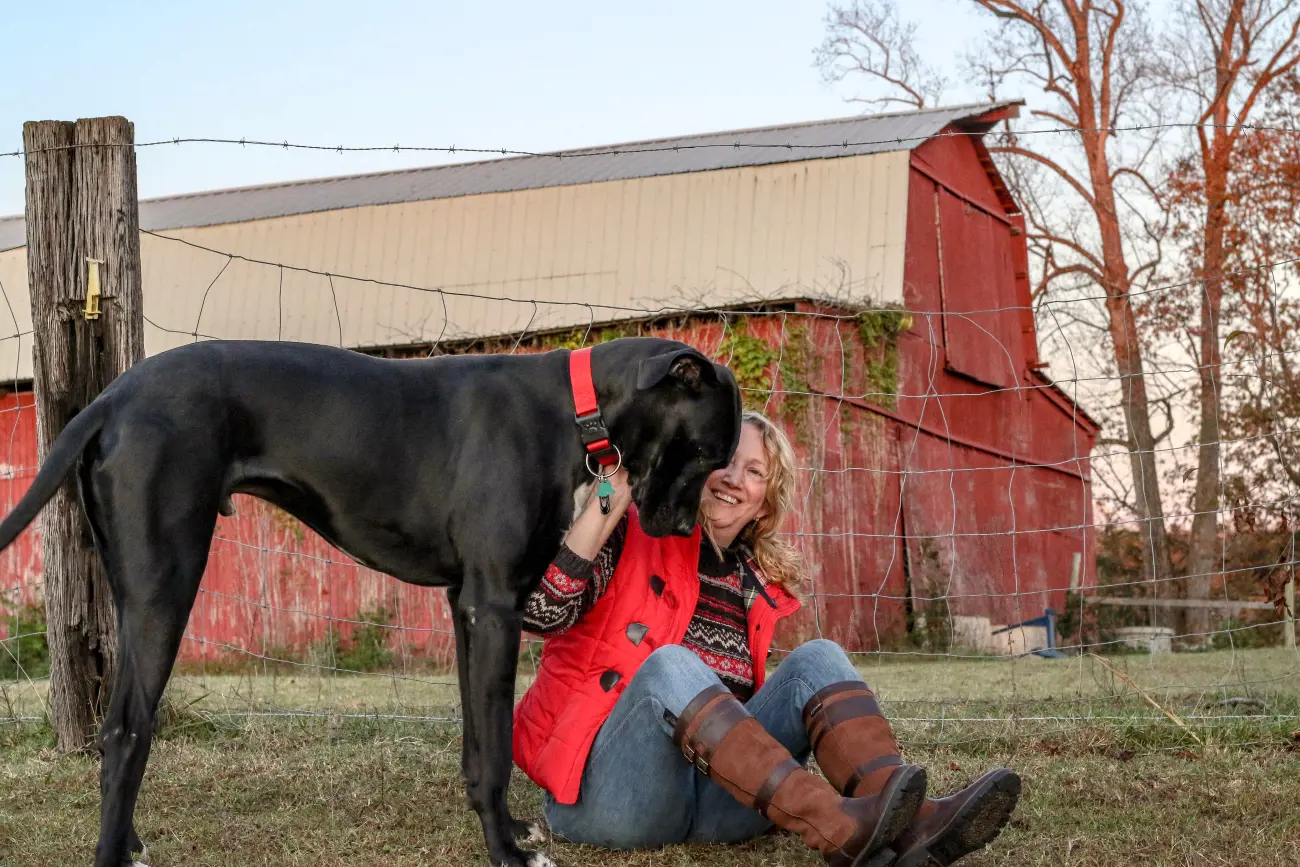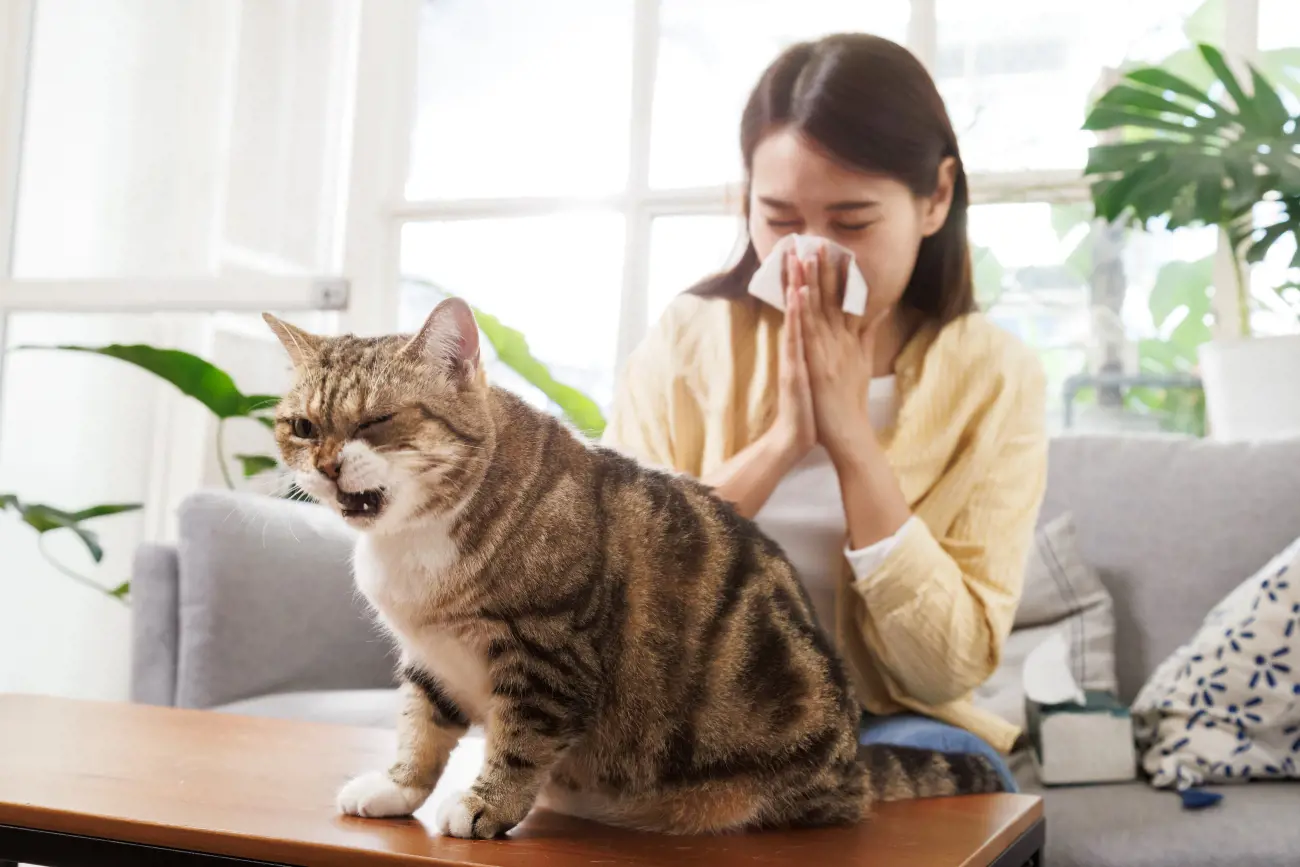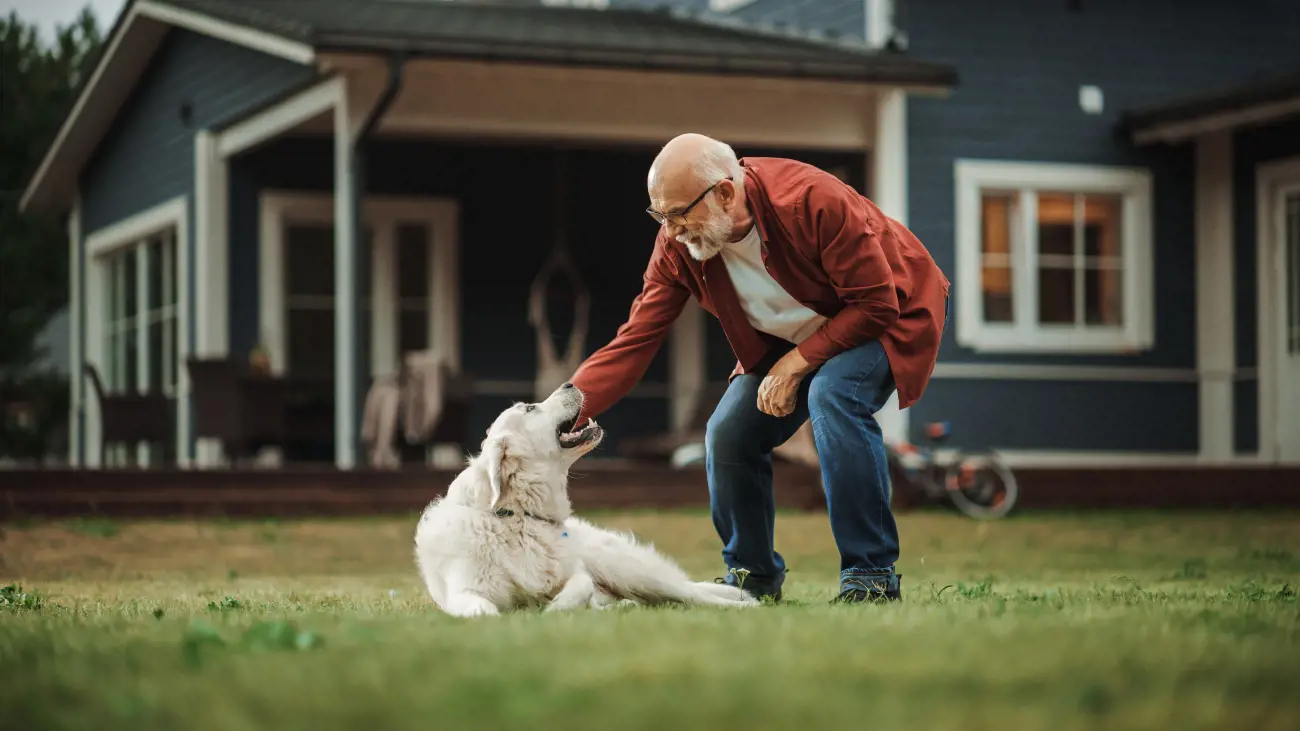A-Z of dog health problems - part 1
13th October, 2021

They say that knowledge is power – and that’s particularly true when it comes to our pets. The more informed you are about all the health problems your dog could develop over their lifetime, the more likely you are to act in a swift and timely manner when they need you most.
Although you can’t be expected to know every type of ailment – that’s what the experts are there for – having a knowledge of the most common health problems clearly has its benefits.
So, here at Purely Pets, we’ve put together this handy A-Z of dog health problems. Part one covers ailments from A to M – everything from arthritis to mange.
Remember, pet insurance can help cover the costs associated with treatment or medication for many of these issues. Contact Purely Pets today for a quote.
A is for Arthritis
Over time, it’s common for a dog’s joints to become uneven and worn – no great surprise given the amount of running and jumping they do in their lifetime – which can make moving around difficult and uncomfortable.
Symptoms of arthritis include stiffness, limping and lameness, particularly after a rest or a long walk. As a dog owner, it’s usually quite easy to spot these kinds of symptoms – you know when your dog isn’t quite right.
Some breeds of dogs are more susceptible to developing arthritis than others including Labradors, German Shepherds and Golden Retrievers.
Once arthritis has been diagnosed, it will unfortunately get slowly worse over time. However, although there is no cure for arthritis, there are treatments available to help manage pain and slow down any deterioration of the joints. Obviously, these ongoing treatments can cost a bit of money over time, so it’s important to have comprehensive dog insurance to cover the costs.
If your dog’s arthritic pain is severely hindering their mobility, surgery might be an option such as fusion (arthrodesis) or replacements.
The best way of avoiding your dog developing arthritis is to make sure they are active throughout their life, which will ensure they don’t become overweight as this can put an extra strain on the joints.

B is for Bladder stones
Sometimes when there is an oversaturation of minerals within your dog’s bladder, they can form crystals and then stones. Often forming over a period of time, bladder stones become a major, life-threatening issue when the stones obstruct the flow of urine from the bladder.
Symptoms of bladder stones include increased drinking and urination and the presence of blood/red discolouration in your dog’s pee.
Brachycephalic (BOAS) breeds such as Pugs and French Bulldogs are particularly susceptible to bladder stones, as are dogs suffering from liver disease.
To diagnose bladder stones, a vet will carry out a complete urine analysis which will determine whether they need to perform an ultrasound or an X-ray.
Surgery is often the answer, using a procedure called a cystotomy in which a vet will go in through the abdomen.
For dogs which are prone to bladder stones, a prescription urinary diet can be a good idea to ensure that mineral levels stay balanced.
Remember pet insurance often includes cover for special diets, too.
C is for Cancer
Cancer can form in any part of a dog’s body and can spread if not diagnosed and treated early enough. Most common areas where cancer can occur are the skin, the digestive system and the breast.
There are no unique symptoms for cancer, but owners should be on their guard if they notice a loss of appetite or enthusiasm and lethargy and weakness in their dog. Obviously, if you notice a lump on the surface of your dog’s skin, this could be cancerous, but it might be a benign tumour.
If anything gives you reason to be concerned your dog might have cancer (or any other illness), take them to the vets at the earliest opportunity where blood samples and X-rays will likely be taken.
An ultrasound or MRI scanning may then be administered. Finally, to get a more definitive diagnosis, a biopsy could be taken.
The suggested course of treatment will depend on the exact type of cancer and how far it has spread. For an isolated tumour, surgery may get rid of the cancer completely. If it has not been possible to remove the entire cancer, a course of chemotherapy might be advised.
D is for Diarrhoea
Dogs will try anything once – even if it comes out the other end as fast as it went in! This curious nature makes our canines prone to getting diarrhoea.
Often there’s not much to worry about with diarrhoea, other than ensuring you manage to get your dog outside in time!
However, you need to encourage your pup to drink plenty of fluids if they have diarrhoea for more than 24 hours and, if possible and safe, limit their food intake, avoiding rich and fatty foods. Once the diarrhoea has passed, you should reintroduce their normal food bit by bit.
If the diarrhoea persists for more than a few days or they keep getting it, you should consult your vet. It could be food related, a gut infection or something less common like liver disease.
Purely Pets policyholders can also call the 24-Hour Vet Helpline for advice if they’re worried.
E is for Ear problems
You can tell a lot by a dog’s ears – whether they’re worried, or happy and relaxed. So, if a dog develops a problem with its ears, it’s important to get them checked out quickly.
Symptoms of ear problems include scratching, head shaking or a smelly discharge. Dogs with large or floppy ears such as Cocker Spaniels and Pugs are more prone to ear disease than other breeds.
Diagnosing an ear problem is usually fairly straightforward – it might be an infection, an ear mite or something more sinister like a tumour. Without treatment, the ear issue will just get worse, so contact your vet as soon as you spot any of the symptoms.

F is for Fleas
A dog’s soft, warm fur is a flea’s dream home, which is why preventative treatment is crucial. There is a vast array of flea control treatments available – consult your vet for the most effective one.
Signs of your dog having fleas are scratching, hair loss and just general skin irritation. If you see your dog showing any of these things, grab a fine-tooth comb and groom your dog over a white surface – that way, you’ll be able to see any fleas as they drop off.
Fleas are a dog owner’s nightmare for a number of reasons – not only do they pose a serious health risk to your pet, your home will need to be treated with spray to get rid of the infestation, as flea eggs can get everywhere.
G is for Glaucoma
Fluid continually flows in and out of a dog’s eyes to provide nutrients and ensure they remain the right size, shape and pressure. But if something stops that fluid from draining out causing a build-up of pressure within the eye, it can lead to glaucoma.
Glaucoma is a serious condition which can lead to blindness, especially if left untreated. It’s not something that can be cured, but there are treatment options for managing the symptoms and delaying sight loss.
Glaucoma might be the result of a fault in the eye’s drainage system or another health issue like a tumour.
It’s usually an easy one to spot with cloudy/blue eyes the tell-tale sign. Other symptoms include sensitivity to light and weepy eyes. Glaucoma is a very painful condition and needs urgent treatment.
In severe cases, anti-glaucoma medication will be administered and then once the condition has stabilised, eye drops will be required as an ongoing treatment.
H is for Heatstroke
Sometimes, the best thing for your dog on a hot and humid day is to keep them cool indoors or to set up a shaded area in your garden (if you have one). We say that because heatstroke is a potentially fatal condition – but entirely avoidable.
A study by Nottingham Trent University and the Royal Veterinary College found that exertion or exercise is responsible for three quarters (74%) of heat stroke cases in dogs.
Commenting on the findings, Emily Hall, a researcher and veterinary surgeon, said: “Dogs don’t just die in hot cars. Taking a dog for a walk or a run in hot weather can be just as deadly so consider skipping walks altogether during heatwaves, or be sure to take dogs out early in the morning whilst it's still cool.”
Signs of heatstroke include heavy panting, vomiting and confusion. If you suspect your dog is suffering from heatstroke, try to calm them, take them somewhere cool, give them a cold drink and call your vet.
I is for Incontinence
If you have an older dog, you might assume it’s fairly normal for them to have a weakened bladder, which results in a bit of leakage from time to time. But urinary incontinence is not an inevitability and shouldn’t just be disregarded due to age.
Incontinence can suggest congenital problems, a urine infection or even spinal problems. So, as soon as you spot that your dog is leaking some urine, get in contact with your vet. The treatment they suggest will depend on the cause.
J is for Jaundice
Jaundice is another health issue that is fairly easy to spot in dogs – the gums are often the giveaway having turned a yellowy colour. Jaundice is the excessive presence of a yellow pigment in the blood tissues called icterus.
Causes of jaundice include the destruction of red blood cells, liver disease and obstruction of the bile duct. A vet will usually take a blood sample to determine the cause but it’s not always straightforward.
It’s important to note that jaundice is a symptom and not a health issue in itself – it indicates that an underlying disease is present. Only once the underlying condition is treated successfully will the jaundice disappear.
K is for Kennel cough
Kennel cough is the dog equivalent of a common cold in humans. As its name suggests, it’s typically picked up in areas where lots of different dogs gather. Kennel cough is highly contagious, so it’s easily spread.
As well as a hacking cough, your dog might have a reduced appetite for a couple of days, along with low energy and a high temperature. Most of the time, they just need some rest and TLC, but you might want to consult your vet if you feel like some anti-inflammatories are required.
You can vaccinate against kennel cough – your dog will need a top-up every 12 months. But this won’t necessarily provide complete immunity.
L is for Lyme disease
The symptoms of Lyme disease are much like other illnesses – limping, stiffness, fever and lethargy – which means it can be hard to spot, unless you go looking for ticks.
Provided that it’s treated quickly, the outlook for a dog with Lyme disease is usually pretty good. But should severe symptoms develop, it can prove fatal.
So, in addition to regular checks, you might want to get your dog a tick collar, and avoid taking walks in long grass. Tablets or spot-on products are also sensible preventative measures.
M is for Mange
If you need another reason to groom your dog and ensure that they are kept up to date with their worming and flea treatments, mange is it.
A horrible skin disease caused by mites, mange can ravage a dog’s coat – there are some pretty unpleasant images to be found online. It causes all kinds of open sores, scabs and hair loss for dogs, and is highly contagious between canines, through direct contact and shared bedding.
Mites will usually go after the insides of the ears, armpits and belly first, as they prefer hairless skin, but will eventually spread everywhere as they reproduce and eggs hatch into larvae.
Once diagnosed, mange is fairly easy to treat with medication. With treatment, dogs will normally be mites-free within a month.

The power to help your pup
Just like us, dogs are prone to all kinds of illnesses and every dog requires some sort of treatment during their lifetime.
Depending on the condition, treatment can be extremely costly – particularly if ongoing medication is required to keep them healthy and pain free. Having the right pet insurance in place will go some way to ensuring you don’t have a difficult decision to make due to finances.
Here at Purely Pets, our pet insurance policies are designed to provide cover for a dog’s entire life.
Get your lifetime dog insurance policy in place today.
Policy benefits, features and discounts offered may very between insurance schemes or cover selected and are subject to underwriting criteria. Information contained within this article is accurate at the time of publishing but may be subject to change.
Helpful Pages
Recent Posts

Why do Great Danes bury their heads?
12/03/25
Find out more about Beagles
28/02/25Pet Insurance Quote
- 98% claims paid *
- Claims paid directly to vets
- 24/7 vet video consultations
- Interest free monthly payments


